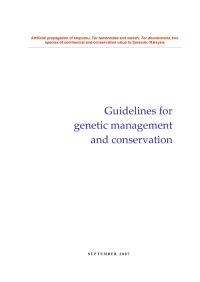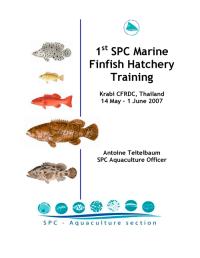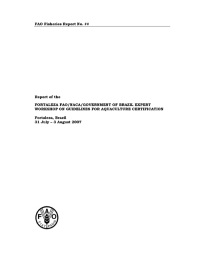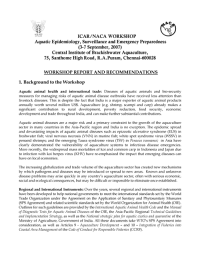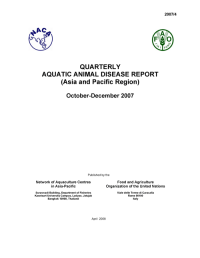This document presents current status on genetic diversity of empurau and semah in Sarawak, Malaysia, including taxonomic status and a management guideline based on genetic data. Inadvertent mixing of the two species, especially during breeding, may lead to hybridisation, a threat to the genetic integrity of wild populations. Surveys on current status of genetic variability of empurau and semah are reported herein, and the results from which are used as baseline data for development of a genetic management plan.
This report describes a training course on marine finfish hatchery protocols, which was convened at the Karabi Coastal Fisheries Research and Development Center, Thailand at the request of the Secretariat of the Pacific Community. The main goal of the training was to carry out hands-on practical work in finfish hatchery techniques, with an emphasis on grouper. This work involved spawning induction, incubation and larval rearing until day 12.
The workshop was the second in a series of expert meetings to assist the development of guidelines for aquaculture certification. The workshop gave stakeholders in the Americas a unique opportunity to get together with international stakeholders to discuss certification and in particular the development of the draft FAO/NACA guidelines for aquaculture certification. The workshop identified a strong need for an aquaculture certification guideline document to inform and guide stakeholders towards responsible and sustainable aquaculture.
This is the report of a five-day training workshop was to build capacity and awareness of relevant stakeholders in the areas of aquatic epidemiology, risk analysis, surveillance and emergency preparedness. The long term objective was to support implementation of national strategies for better aquatic animal health management with a focus on improved surveillance, reporting, early response, emergency preparedness, risk analysis, certification and quarantine.
